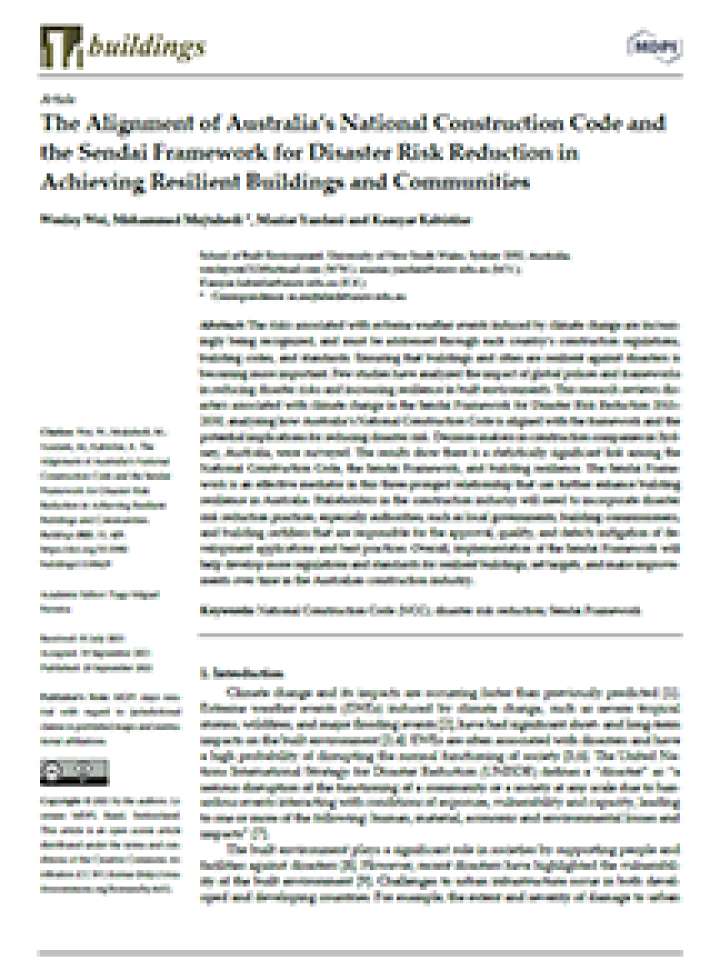The Alignment of Australia’s National Construction Code and the Sendai Framework for Disaster Risk Reduction in Achieving Resilient Buildings and Communities
This report describes how the risks associated with extreme weather events induced by climate change are increasingly being recognized, and must be addressed through each country’s construction regulations, building codes, and standards. Ensuring that buildings and cities are resilient against disasters is becoming more important. Few studies have analyzed the impact of global polices and frameworks in reducing disaster risks and increasing resilience in built environments. This research reviews disasters associated with climate change in the Sendai Framework for Disaster Risk Reduction 2015–2030, analyzing how Australia’s National Construction Code is aligned with the framework and the potential implications for reducing disaster risk. Decision-makers in construction companies in Sydney, Australia, were surveyed.
The results show there is a statistically significant link among the National Construction Code, the Sendai Framework, and building resilience. The Sendai Framework is an effective mediator in this three-pronged relationship that can further enhance building resilience in Australia. Stakeholders in the construction industry will need to incorporate disaster risk reduction practices, especially authorities, such as local governments, building commissioners, and building certifiers that are responsible for the approval, quality, and defects mitigation of development applications and best practices. Overall, implementation of the Sendai Framework will help develop more regulations and standards for resilient buildings, set targets, and make improvements over time in the Australian construction industry.
Explore further
